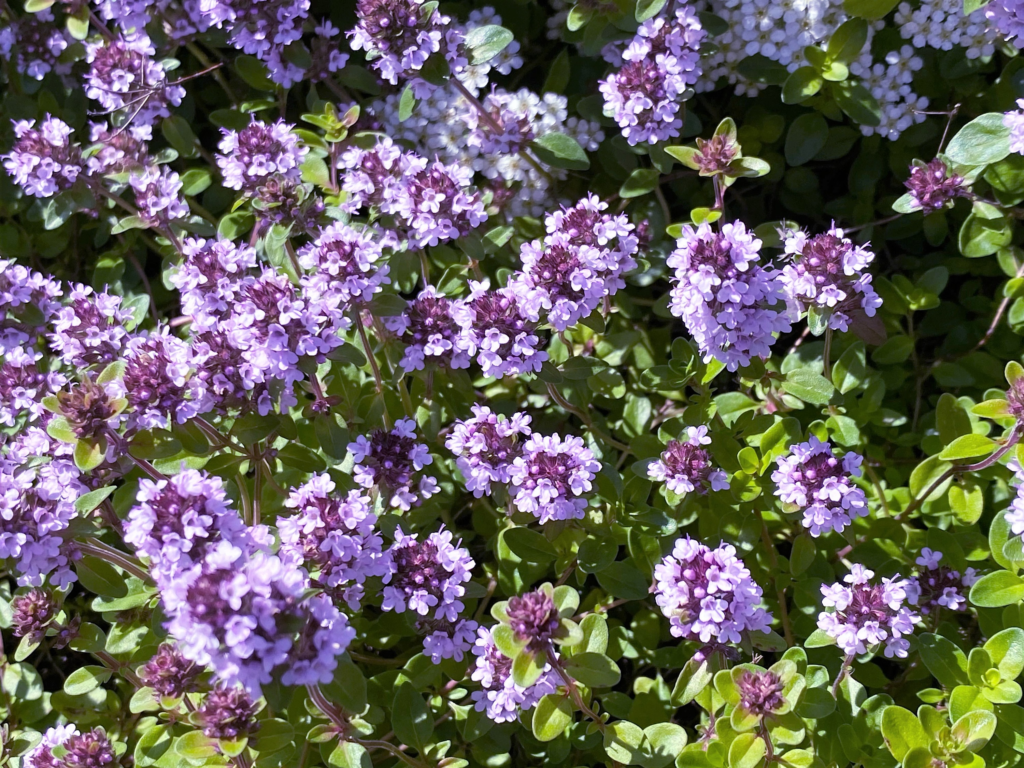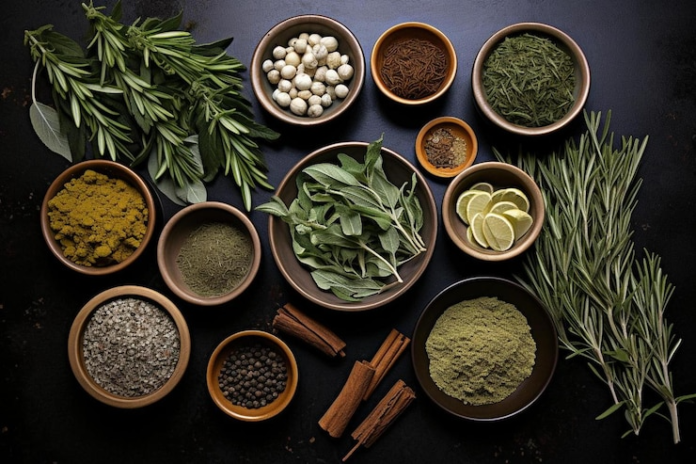Spice up your life and your health with the vibrant world of culinary herbs! These tiny powerhouses go far beyond adding flavour to your favourite dishes. Culinary herbs boast a treasure trove of health benefits, waiting to be unlocked with every sprinkle or chopped addition to your meals. From boosting your immune system to aiding digestion, incorporating culinary herbs into your diet is a delicious way to elevate your well-being. Let’s delve into the fascinating world of these flavorful friends and discover how they can transform your health alongside your cooking!
Benefits of Culinary herbs
Forget bland meals and lacklustre flavour! Culinary herbs are nature’s tiny titans of taste and health benefits. These fragrant powerhouses go far beyond adding a pop of colour to your plate. Packed with vitamins, minerals, and antioxidants, culinary herbs offer a delicious way to boost your well-being with every dish. From aiding digestion to potentially fighting inflammation, incorporating a variety of herbs into your diet can significantly impact your health. Let’s explore the wonderful world of culinary herbs and discover how they can transform your meals and overall health!
1. Cinnamon
The cinnamon tree offers more than just a fragrant spice – its bark, ground into the cinnamon sticks we know and love, boasts a surprising range of culinary benefits. Beyond adding warmth and depth to countless dishes, cinnamon can elevate your baking with its unique sweetness, allowing you to reduce the amount of refined sugar needed. It also pairs beautifully with savoury dishes like stews and curries, offering a complex flavour profile. But cinnamon’s magic goes beyond taste. It can help regulate blood sugar, making it a friend for diabetes patients. Additionally, cinnamon has anti-inflammatory and antimicrobial properties, potentially contributing to overall health and well-being. So, next time you reach for cinnamon, remember that you’re not just adding flavour but incorporating some culinary magic.

2. Dill (Anethum graveolens)
Be aware of its delicate appearance; Dill (Anethum graveolens) is a culinary powerhouse with a flavour that packs a punch. This feathery green herb is a superstar in elevating savoury dishes. The feathery leaves boast a bright, citrusy aroma with subtle hints of pepper and mint, making it a perfect partner for fatty fish like salmon or creamy sauces. Think dill-accented potato salad, creamy cucumber dressing, or a vibrant chimichurri sauce. But Dill’s talents extend far beyond. It adds a touch of magic to roasted vegetables, brightens marinades for grilled meats, and even infuses vinegar with a refreshing twist. So, next time you want to add a burst of flavour and a touch of elegance to your dish, reach for the Dill – it’s a versatile herb with the power to transform your culinary creations.

3. Chives (Allium schoenoprasum)
Chives (Allium schoenoprasum), those slender green stalks resembling miniature scallions, bring more to the table than just a pop of colour. These tiny powerhouses are a chef’s secret weapon, adding a burst of delicate oniony flavour without the overpowering kick of their larger counterparts. Chopped chives elevate countless dishes, from creamy scrambled eggs and tangy potato salad to fluffy omelettes and baked potatoes. Their mild flavour makes them a versatile ingredient at home in hot and cold preparations. Sprinkle them over a finished dish for freshness and visual appeal, or incorporate them into sauces and dips for a subtle oniony hint. But chives aren’t just a culinary delight; they boast a mild, peppery bite that can help cut through the richness in heavier dishes. So next time you want to add a touch of elegance and subtle onion flavour, reach for the chives – their delicate presence packs a flavorful punch.

4. Chervil herb (Anthriscus cerefolium)
Chervil herb (Anthriscus cerefolium), often overshadowed by its bolder herb cousins, is a secret weapon for those seeking delicate flavour and elegance in their cuisine. This feathery green herb boasts a subtle anise-like flavour with hints of parsley and tarragon, making it a perfect partner for dishes that require a light touch. Unlike some overpowering herbs, chervil herb won’t dominate the flavour profile. Instead, it adds a sophisticated nuance to creamy sauces, elevates the freshness of spring vegetables, and complements delicate fish dishes beautifully. Think of it gracing a light hollandaise sauce, nestled amongst asparagus spears, or sprinkled over a pan-seared trout.
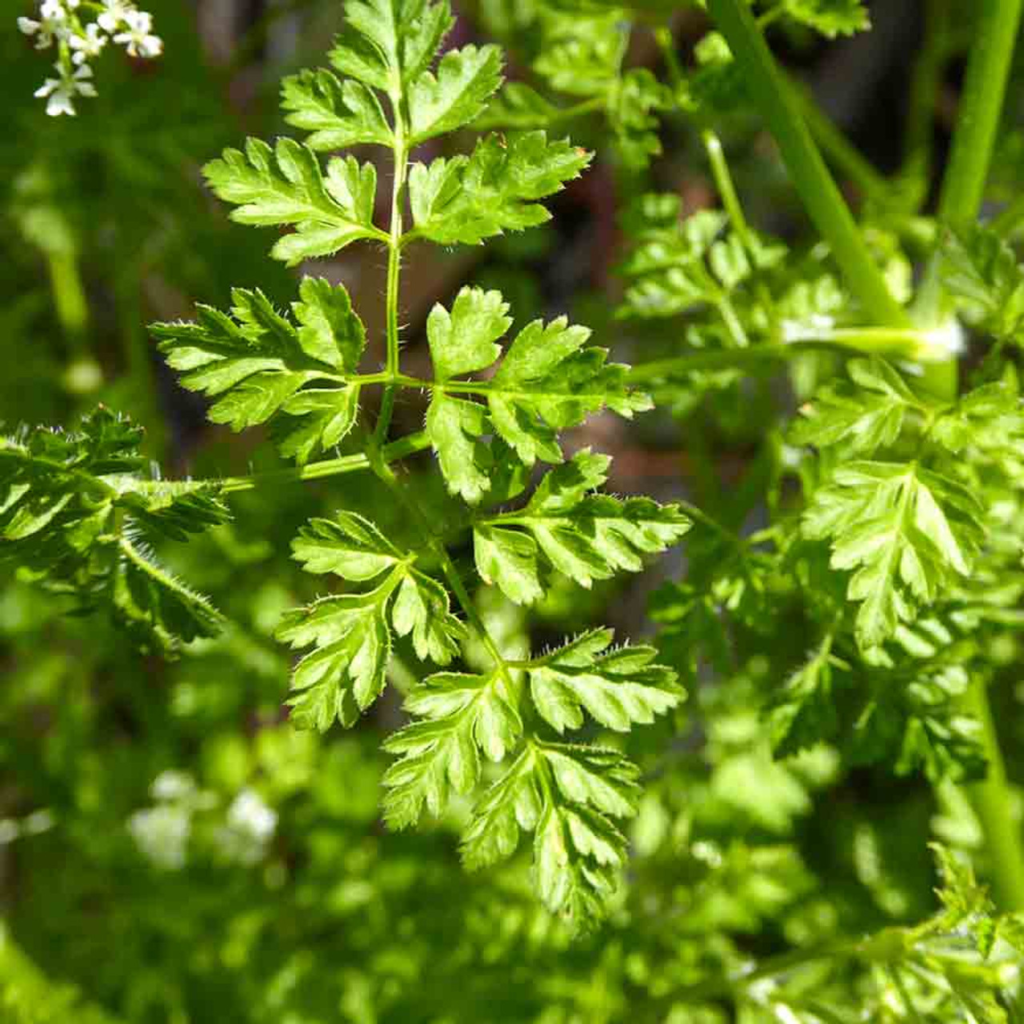
5. French Tarragon (Artemisia dracunculus)
French tarragon (Artemisia dracunculus) is different from your average herb. This unique ingredient offers a flavour profile that dances between liquorice, anise, and a hint of pepper, making it a favourite among adventurous cooks. Unlike its overpowering cousin, the Russian tarragon, the French tarragon boasts a subtler, more delicate touch. It shines in classic French dishes like Béarnaise sauce, where its peppery liquorice notes elevate the richness of butter and egg yolk. But French tarragon’s magic extends far beyond traditional French cuisine. It pairs beautifully with chicken and fish, adds complexity to creamy sauces and dressings, and even elevates simple roasted vegetables. Think of tarragon-infused chicken salad, a creamy tarragon dressing on summer greens, or roasted potatoes seasoned with this unique herb. However, the French tarragon has a mind of its own. Its flavour tends to diminish with prolonged cooking, so it’s best added towards the end of the cooking process or even as a garnish. This allows its subtle liquorice and peppery notes to truly shine and add a touch of complexity to your culinary creations.

6. Chamomile (Chamaemelum nobile)
Chamomile (Chamaemelum nobile) offers a surprising dual role in the kitchen. While most familiar with its soothing properties in tea, chamomile’s delicate floral notes can also add a touch of elegance to culinary creations. This herb boasts a subtle sweetness with hints of apple and honey, making it a perfect partner for lighter dishes. Imagine infusing a simple syrup with chamomile blossoms for a fragrant addition to cocktails or drizzling chamomile-infused honey over a fruit salad for a touch of floral sophistication. However, chamomile’s delicate flavour is best expressed in cooler or uncooked preparations, as heat can mute its nuance. Explore steeping chamomile flowers in cream for a unique twist on a fruit tart filling, or infuse them in vinegar for a fragrant salad dressing. For the adventurous cook, chamomile can even be sprinkled in small amounts over fresh fruit or incorporated into savoury dishes like a chicken salad for a touch of unexpected intrigue. So, the next time you want to elevate a dish with a hint of summer and floral flair, consider reaching for chamomile – a versatile herb with surprising culinary potential.

7. Coriander (Coriandrum sativum)
Coriander (Coriandrum sativum) is a culinary chameleon, offering a flavour profile that transforms depending on the part of the plant you use and when it’s added to a dish. The fresh leaves, often called cilantro, boast a bright, citrusy aroma with hints of pepper and soap (though some people don’t detect the soapy notes). This bright flavour makes cilantro a perfect partner for fresh salsas, guacamole, and summer salads. Chopped cilantro adds a refreshing lift to curries and soups, while its citrusy notes beautifully complement fish and shellfish. But coriander’s magic goes beyond the leaves. The dried seeds, often called coriander seeds, take on a warm, nutty aroma when toasted, offering a completely different flavour. Whole or ground coriander seeds add depth and complexity to curries, spice rubs, and marinades. They’re a crucial ingredient in garam masala, a warming Indian spice blend. So, with fresh leaves for a burst of citrus and dried seeds for a warm, nutty touch, coriander provides a flavour toolbox for the adventurous cook, allowing you to elevate your dishes from simple to sensational.

8. Lemongrass (Cymbopogon flexuosus)
Lemongrass (Cymbopogon flexuosus) isn’t just another pretty stalk in the herb garden; it’s a powerhouse of flavour and culinary versatility. The magic lies in the stalk, particularly the pale yellow bottom section. This part boasts a refreshing citrusy aroma with subtle hints of ginger and lemon, making it a superstar in Southeast Asian cuisine. Lemongrass infuses soups, curries, and stir-fries with its fragrant lemony notes, adding depth and complexity without overpowering other flavours.
But lemongrass’s talents extend far beyond its citrusy punch. The fibrous stalks can be bruised or muddled to release even more flavour and whole stalks are often used for simmering broths and soups, infusing them with a delicate lemongrass essence. Once cooked, the stalks are typically discarded due to their tough texture. Lemongrass paste, readily available in many stores, offers a convenient way to add this vibrant flavour to your dishes. So next time you want to elevate your Asian-inspired creations, reach for the lemongrass – its unique citrusy aroma and versatility will transform your cooking from ordinary to extraordinary.
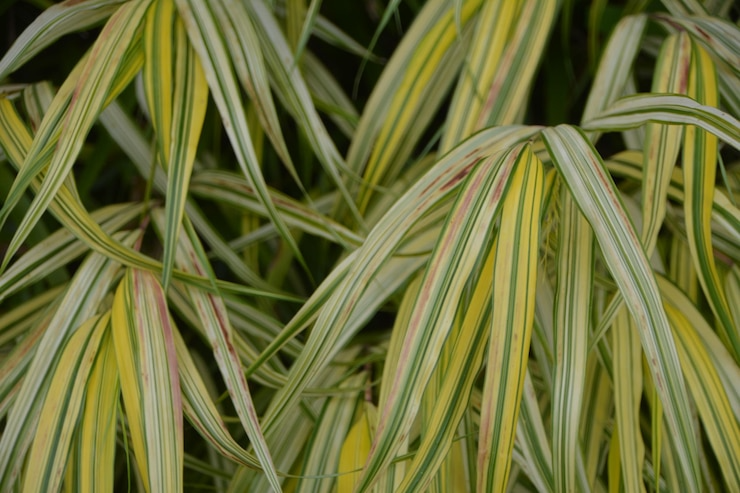
9. Fennel (Foeniculum vulgare)
Fennel (Foeniculum vulgare) offers a unique flavour profile that adds depth and intrigue to various dishes. Unlike many herbs, the feathery green fronds and the bulbous base offer culinary benefits. The fronds boast a liquorice-like anise flavour with a hint of Dill, making them a perfect partner for fish dishes, roasted vegetables, or even light salads. Think of fennel fronds gracing a pan-seared cod, adding a touch of liquorice to roasted carrots, or bringing a subtle anise note to a summer fennel and citrus salad. But the magic truly lies in the fennel bulb. Its flavour is more nuanced than the fronds, offering a sweet and liquorice-like taste with a hint of celery. Fennel bulb shines when sliced thin and eaten raw with a drizzle of olive oil and a sprinkle of salt, or it can be braised, roasted, or grilled for a more profound, caramelized sweetness. It pairs beautifully with pork sausage in Italian sausage fennel pasta dishes or adds complexity to creamy fennel and potato gratins. So, with its versatility and unique flavour profile, fennel truly is a bulb with culinary benefits that extend far beyond the liquorice notes it’s known for.

10. Bay (Laurus nobilis)
Bay leaves (Laurus nobilis) may not be the star ingredient you sprinkle on at the end for a burst of flavour, their presence behind the scenes is crucial in many culinary creations. These aromatic leaves boast a subtle yet complex flavour profile, offering hints of mint, eucalyptus, and pepper. Don’t be fooled by their subtlety, though – bay leaves are the silent heroes of broths, soups, stews, and slow-cooked dishes. As they simmer gently, they release their fragrant oils, infusing the surrounding ingredients with a depth of flavour that builds and unfolds over time. Think of a rich beef bourguignon or a hearty lentil soup – the subtle complexity in these dishes owes a debt of gratitude to the bay leaf lurking beneath the surface. However, it’s important to remember that bay leaves are not meant to be eaten whole. Their texture is harsh and unpleasant, so remove them before serving. But their subtle magic will linger in the finished dish, a testament to the transformative power of bay leaves in the culinary world.

11. Mint (Mentha)
The mint family (Mentha) offers a fragrant and versatile arsenal of culinary benefits. From the bright, peppery kick of peppermint to the cool, refreshing breath of Spearmint, there’s a mint variety to elevate nearly any dish. Peppermint’s invigorating flavour shines in savoury applications. Chopped leaves refresh summer salads, brighten roasted vegetables, or create a vibrant chimichurri sauce for grilled meats. For a unique twist, try muddling peppermint leaves with simple syrup for a flavorful cocktail muddler. With its milder and sweeter profile, Spearmint takes centre stage in sweeter applications. It’s a natural partner for fresh summer fruits, adding a delightful flavour to fruit salads or complementing chocolate desserts with its cooling effect. Mint also infuses beverages with a fragrant lift. Steep spearmint leaves in hot water for a calming herbal tea, or muddle them with fresh fruit and sparkling water for a refreshing summer cooler. So next time you’re looking for a burst of flavour or a touch of coolness, reach for the mint – its versatility ensures a perfect variety to transform your culinary creations.

12. Basil (Ocimum basilicum)
Basil (Ocimum basilicum) isn’t just a garnish relegated to the side of the plate – it’s a flavour powerhouse waiting to be unleashed. This versatile herb boasts a range of varieties, each offering a unique twist on its signature peppery and slightly sweet character. Sweet basil, the most common variety, reigns supreme in classic Italian dishes like pesto and Caprese salad. Its bright, herbaceous flavour complements tomatoes, mozzarella, and olive oil perfectly. But basil’s magic extends far beyond Italian cuisine. With its subtle anise notes, Thai basil elevates fragrant curries and noodle dishes. Lemon basil adds a refreshing citrusy twist to seafood creations, while holy basil, revered in Southeast Asia for its religious significance, offers a peppery kick to stir-fries. Beyond its flavour versatility, basil boasts potential health benefits. It’s a good source of Vitamin K and may have anti-inflammatory properties. So, next time you want to elevate a dish with flavour and a touch of goodness, reach for basil. There’s a perfect variety waiting to transform your culinary creations from ordinary to extraordinary.

13. Oregano & Marjoram (Origanum)
Oregano and marjoram, close cousins in the Origanum genus, are like a florist’s dream team. Both boast a warm, herbaceous character but distinct personalities that shine in different culinary applications. Oregano, the bolder sibling, is known for its robust, peppery notes with hints of mint and pine. It’s the undisputed king of pizzas and tomato-based sauces, where its strong flavour stands up beautifully to rich cheeses and tangy tomatoes. Think of a classic Margherita pizza or a hearty Italian pasta sauce – oregano’s presence is essential.
Marjoram, on the other hand, offers a gentler touch. Its flavour profile is more subtle, with a sweetness underlying its earthy and slightly oregano-like character. This softer approach makes marjoram perfect for delicate dishes with a lighter hand. It elevates poultry and fish dishes, adds complexity to creamy sauces, and brings a touch of sophistication to roasted vegetables. Imagine herb-roasted chicken seasoned with marjoram or a creamy mushroom sauce infused with a subtle sweetness. So, while oregano steals the show in bold Italian dishes, marjoram takes centre stage in more nuanced culinary creations. These versatile herbs offer a flavour toolbox for any cook, allowing you to create dishes that range from robust and full-bodied to elegantly balanced and refined.

14. Parsley (Petroselinum)
Parsley (Petroselinum) might seem like a simple garnish, but take into account its culinary influence. This versatile herb packs a surprising punch of flavour that elevates dishes in several ways. With its intense peppery flavour, the flat-leaf variety is a workhorse in the kitchen. Chopped flat-leaf parsley adds a bright, herbaceous note to soups, stews, and grain salads. It’s the perfect partner for earthy ingredients like mushrooms and lentils, balancing their richness with a touch of freshness. But parsley’s talents extend beyond savoury dishes. Its vibrant colour adds visual appeal to any plate, and a sprinkle of chopped flat-leaf parsley can instantly transform a simple dish into a restaurant-worthy presentation. With its softer flavour and more delicate leaves, curly parsley takes a more decorative role. It’s a lovely garnish for lighter dishes like fish or roasted vegetables, adding a touch of elegance without overpowering the delicate flavours. So next time you reach for parsley, remember it’s more than just a garnish – it’s a versatile herb with the power to add brightness, depth, and visual appeal to your culinary creations.
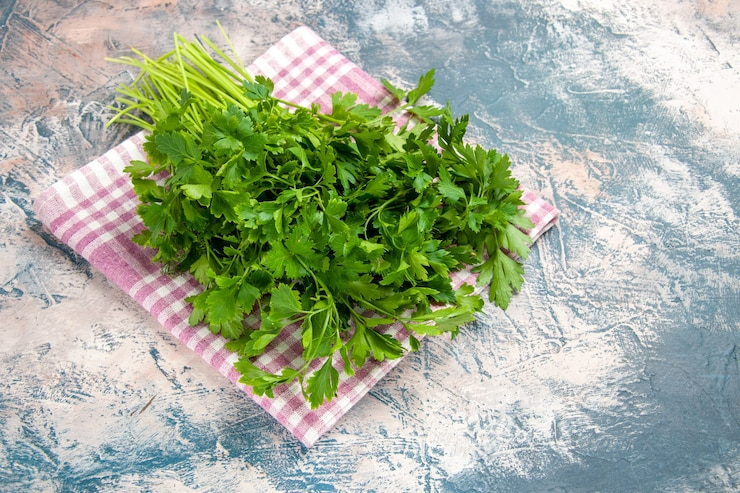
15. Rosemary (Rosmarinus officinalis)
Rosemary (Rosmarinus officinalis) isn’t just a fragrant sprig used for decoration; it’s a culinary workhorse with a depth of flavour that elevates countless dishes. Its needle-like leaves boast a potent aroma with notes of pine, eucalyptus, and a touch of pepper. This bold character makes rosemary a perfect partner for robust ingredients. Think of rosemary-infused roasted lamb chops, whose strong flavour stands up beautifully to the meat’s richness. But rosemary’s magic extends beyond meat dishes. A sprig or two adds complexity to stews, soups, and bean dishes, while a touch of focaccia dough imbues it with a delightful herbal fragrance. For a lighter touch, rosemary pairs surprisingly well with roasted vegetables, drawing out their sweetness and adding a touch of savoury depth. Rosemary even complements lighter fare like herb-roasted chicken or creamy mushroom risotto, offering a hint of piney intrigue. Plus, rosemary is a natural source of antioxidants and may have anti-inflammatory properties, making it a delicious and potentially health-supportive addition to your meals. So next time you want to add a depth of flavour and a touch of the Mediterranean to your cooking, reach for the rosemary – it’s a versatile herb with the power to transform your culinary creations.

16. Sage (Salvia)
The sage herb plant isn’t just a revered medicinal herb; it’s a culinary chameleon with a flavour profile that can elevate various dishes. Its earthy, slightly peppery notes with a hint of mint can add depth and complexity to meat-based and vegetarian creations. The sage herb plant shines in classic pairings like roasted chicken or pork, where its robust flavour complements the meat’s richness. But its magic extends far beyond those traditional uses. Sage herb plant butter can elevate simple pasta dishes, while a sprinkle of chopped sage leaves adds a touch of sophistication to creamy polenta or risotto.
However, if you’re looking for substitutes, the world of herbs offers a delightful variety. For a similar earthy character with a touch of citrus, consider thyme. Thyme pairs beautifully with roasted vegetables, bringing stews and soups a lovely fragrance. Try substituting with marjoram if you prefer a more floral and slightly minty touch. Marjoram’s delicate sweetness complements poultry and fish dishes beautifully, adding a touch of elegance without overpowering the main ingredients. So, next time you want to add depth and intrigue to your cooking, reach for the sage herb plant (or its herbal substitute) – it’s a versatile herb with the power to transform your culinary creations.
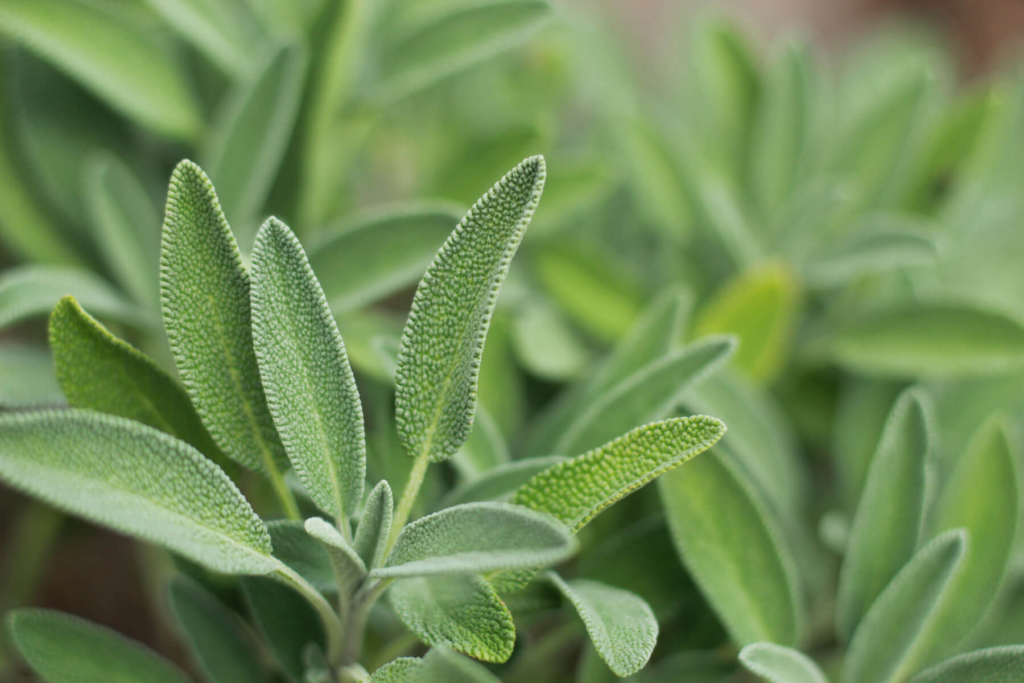
17. Winter Savory (Satureja montana)
Winter savoury (Satureja montana) might not be a household name, but this tiny herb packs a powerful punch in the kitchen. Unlike its summer savoury cousin, winter savoury boasts a more intense, peppery flavour with hints of pine and earth. This robust character makes it a perfect partner for hearty dishes that can handle its bold presence. Think of winter savoury-infused sausage stuffing for a roast turkey, whose strong flavour stands up beautifully to the richness of the meat and bread.
But winter savoury’s magic extends beyond meat. A sprinkle adds depth and complexity to bean dishes like lentil soup or baked beans, balancing their richness with its earthy notes. It’s a natural addition to stews and soups, offering a savoury warmth that complements root vegetables and other winter ingredients. Winter savoury even shines in unexpected places. A touch can elevate roasted vegetables, drawing out their sweetness and adding a hint of peppery intrigue. Plus, winter savoury boasts potential health benefits, with some studies suggesting it may aid digestion and soothe stomach discomfort. So, next time you want to add a depth of flavour and warmth to your winter dishes, reach for the winter savoury – it’s a versatile little herb with the power to transform your culinary creations.

18. Stevia (Stevia rebaudiana)
Stevia (Stevia rebaudiana) is different from your typical culinary herb. While it doesn’t boast a strong flavour profile for direct use in cooking, stevia shines as a guilt-free sweetener. Extracted from the stevia plant leaves, this natural sweetener is incredibly potent – hundreds of times sweeter than table sugar! This translates to a powerful culinary benefit: you can achieve sweetness in your dishes without the calorie or blood sugar impact of sugar. Stevia is a perfect option for those looking to manage their weight, control blood sugar levels, or reduce their sugar intake. Baked goods like cookies and cakes can be sweetened with stevia, allowing you to indulge in treats without the usual sugar spike. It can also sweeten beverages like coffee, tea, or even homemade lemonade, providing a delightful sweetness without the hidden calories. While stevia may not add complex flavours like other herbs, its role as a sugar substitute opens possibilities for creating delicious dishes that are kind to your waistline and your health.
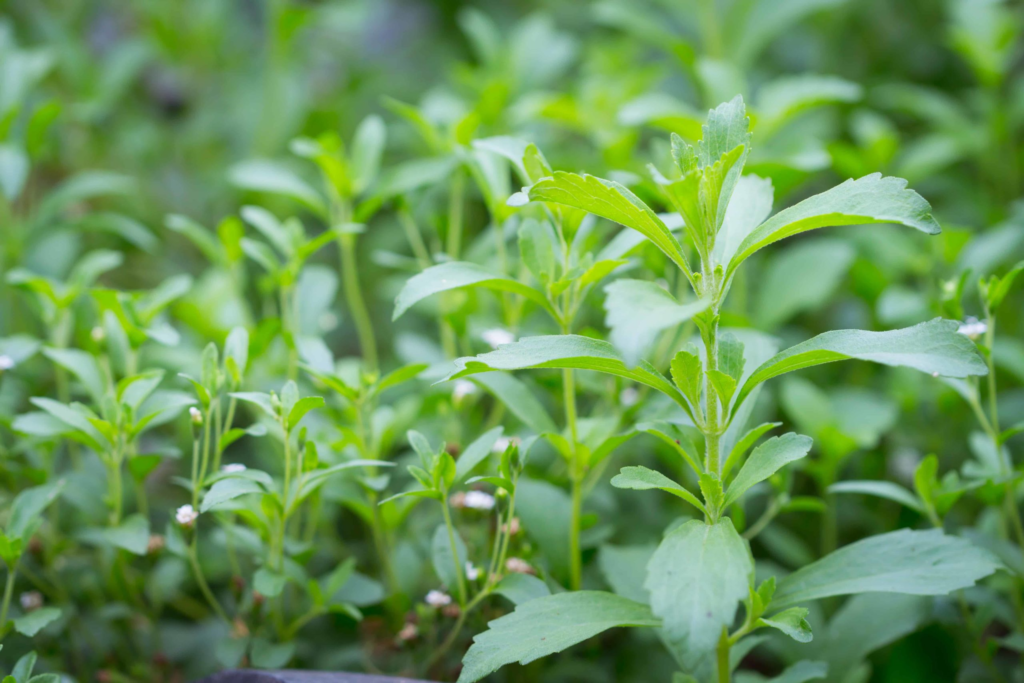
19. Thyme (Thymus)
Thyme (Thymus) is a tiny titan in the herb world, offering a flavour profile that packs a punch far beyond its size. This aromatic herb boasts a warm, peppery character with hints of lemon and mint, making it a versatile ingredient for countless dishes. Thyme shines in savoury applications, where its earthy notes elevate and complement a variety of ingredients. Think of thyme-infused roasted chicken or a pot of simmering lentil soup – the herb’s fragrance infuses the dish, adding depth and complexity without overpowering the primary flavours. But thyme’s magic extends beyond simple pairings. A sprinkle adds sophistication to creamy sauces and dressings, while a sprig or two can transform a pot of beans into a flavorful culinary adventure. Try thyme-roasted vegetables or a fragrant mushroom risotto infused with its earthy goodness for a vegetarian twist. Plus, thyme boasts potential health benefits, with some studies suggesting it may have antimicrobial and immune-boosting properties. So next time you want to add warmth, depth, and a hint of lemon-mint intrigue to your cooking, reach for the thyme – a tiny herb with a flavour that can transform your culinary creations.
